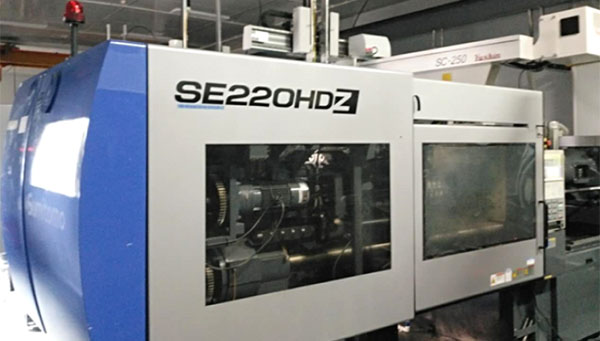Troubleshooting Common Issues in Injection Molding Machines
At Elite, a leading plastic injection mold manufacturer in China, we specialize in the design and production of high-quality plastic injection molds and molded parts. With our extensive experience in the injection molding industry, we understand that even the most advanced machines can encounter issues. Identifying and resolving these problems quickly is crucial for maintaining production efficiency and product quality.
In this article, we will discuss some of the most common issues faced in injection molding machines and provide troubleshooting tips to help you resolve these challenges.
Common Issues in Injection Molding Machines
Injection molding is a complex process that requires precise control of temperature, pressure, material flow, and mold closing. Various factors can cause defects or malfunctions, leading to production delays or substandard products.
1. Short Shots
What Are Short Shots?
A short shot occurs when the molten plastic doesn’t completely fill the mold cavity, resulting in incomplete parts. This can affect the part's functionality and appearance.
Causes of Short Shots:
- Insufficient injection pressure or speed
- Low barrel temperature
- Clogged nozzle or gates
- Poor venting in the mold
- Material flow restrictions
Troubleshooting Short Shots:
- Increase injection pressure and speed: Ensure the plastic can flow quickly and evenly into the mold cavity.
- Check barrel temperature: Raise the temperature if the plastic isn’t melting properly.
- Inspect the nozzle and gates: Clean any blockages that may be restricting material flow.
- Improve mold venting: Ensure that air can escape freely from the mold to allow the plastic to fill it completely.
At Elite, we monitor and adjust these parameters carefully to avoid short shots and ensure every part is fully molded.
2. Flash on Molded Parts
What is Flash?
Flash occurs when excess plastic leaks out of the mold, creating a thin layer of material along the parting line or around holes.
Causes of Flash:
- Incorrect clamping force
- Worn or damaged mold
- Improper mold alignment
- Excessive injection pressure
Troubleshooting Flash:
- Check clamping force: Ensure that the clamping force is sufficient to keep the mold tightly closed during the injection process.
- Inspect the mold: Look for any wear or damage that may cause misalignment.
- Reduce injection pressure: High pressure can force excess material into areas outside the mold cavity.
- Realign the mold: Ensure that the mold halves are properly aligned to prevent gaps during the injection process.
At Elite, we regularly inspect our molds and machines to prevent issues like flash and maintain the integrity of the molded parts.
3. Burn Marks
What Are Burn Marks?
Burn marks appear as dark discolorations on the surface of the part, usually caused by trapped air or overheated material during the injection process.
Causes of Burn Marks:
- Trapped air in the mold
- High injection speed
- Excessive material temperature
- Poor venting in the mold
Troubleshooting Burn Marks:
- Improve mold venting: Ensure that the air can escape from the mold during injection.
- Reduce injection speed: Slowing down the injection speed can help prevent air from becoming trapped and overheating.
- Lower material temperature: Reducing the barrel or nozzle temperature can help prevent the material from burning.
At Elite, we use advanced mold designs with proper venting and carefully control injection speeds to avoid burn marks and ensure smooth part surfaces.
4. Warping of Parts
What is Warping?
Warping occurs when the molded part bends or twists out of shape after it has been ejected from the mold. This can happen during cooling or due to uneven material shrinkage.
Causes of Warping:
- Uneven cooling rates
- Incorrect material temperature
- Inconsistent mold temperature
- Poor part design or wall thickness variation
Troubleshooting Warping:
- Control cooling rates: Ensure the part cools evenly by adjusting the mold cooling system.
- Check material temperature: Maintain consistent material temperatures to avoid uneven shrinkage.
- Ensure even mold temperature: Adjust mold temperature to be consistent across the entire surface of the mold.
- Optimize part design: Ensure uniform wall thickness and avoid sharp corners that can create stress points and lead to warping.
At Elite, we carefully design parts and molds to minimize warping and maintain the structural integrity of every molded part.

Machine-Specific Issues and Their Solutions
Beyond product defects, injection molding machines themselves can experience mechanical or operational problems that need prompt attention.
1. Injection Unit Malfunction
Common Issues:
- Inconsistent material flow
- Difficulty maintaining consistent pressure
- Barrel or screw damage
Troubleshooting:
- Check the screw and barrel: Inspect for wear or damage and replace if necessary.
- Ensure proper material consistency: Check for contaminants in the material that could block the screw.
- Monitor pressure settings: Ensure that pressure is consistent throughout the injection cycle.
At Elite, we regularly service our injection units to maintain consistent material flow and pressure control, ensuring high-quality output.
2. Clamping Unit Problems
Common Issues:
- Mold not closing or opening properly
- Loss of clamping force
- Noisy or slow operation
Troubleshooting:
- Check hydraulic pressure: Ensure that the hydraulic system is functioning correctly and there are no leaks.
- Inspect the tie bars and clamping system: Look for wear or damage that could affect clamping performance.
- Lubricate moving parts: Ensure that the clamping system is properly lubricated to reduce friction and noise.
At Elite, we carry out routine inspections and maintenance on our clamping units to ensure that molds open and close smoothly and consistently.
3. Heating Issues
Common Issues:
- Uneven or insufficient heating in the barrel or mold
- Overheating of material
- Difficulty maintaining the set temperature
Troubleshooting:
- Check heating elements: Ensure that all heating elements are functioning properly and are heating evenly.
- Monitor temperature sensors: Ensure that temperature sensors are calibrated and providing accurate readings.
- Adjust cooling system: Ensure that the cooling system is not interfering with the heating process and causing uneven temperatures.
At Elite, we use advanced temperature monitoring systems to maintain precise control over heating and cooling during the injection molding process.
Preventive Maintenance to Minimize Issues
Preventive maintenance is key to avoiding many of the common issues faced in injection molding. At Elite, we follow a strict preventive maintenance schedule that includes:
- Regular lubrication of moving parts to reduce friction and wear.
- Frequent inspections of hydraulic systems to ensure consistent performance.
- Cleaning and inspecting molds to prevent material buildup and ensure proper alignment.
- Testing temperature controls to ensure that the barrel and mold heating systems are functioning correctly.
By staying proactive with maintenance, we minimize machine downtime, extend the lifespan of our equipment, and maintain the high quality of our molded parts.
Why Choose Elite for Your Injection Molding Needs?
At Elite, we are committed to providing high-quality injection molded parts with minimal defects. Our expertise in troubleshooting common injection molding issues and maintaining our machines ensures that we can deliver superior results for your projects.
1. Experienced Team
Our skilled engineers and technicians are trained to identify and resolve issues quickly, ensuring smooth production and high-quality results.
2. State-of-the-Art Equipment
We use advanced machinery and technology, allowing us to monitor and adjust parameters in real-time to prevent common defects and malfunctions.
3. Commitment to Quality
At Elite, we follow strict quality control measures at every stage of production to ensure that every molded part meets your exact specifications.
Conclusion
Injection molding machines can encounter various issues during production, but with the right troubleshooting approach and maintenance practices, these problems can be resolved quickly. From addressing short shots and flash to solving machine-specific malfunctions, Elite takes a proactive approach to ensure that our injection molding processes remain efficient and reliable.
By partnering with Elite, you can be confident that your injection molding projects will be delivered with the highest quality and precision. Contact us today to learn more about how we can support your production needs.
Related news
Our Certificates
By co-operating with Elite Mold, you have selected one of the most reliable ISO 9001 certified plastic mold manufacturer, Elite Mold as a plastic injection mold manufacturer specializing in plastic injection mold and supplying plastic injection molding services for plastic mold design, prototype makings, mold flow analysis, precise machining, OEM services, ODM services and so on, building custom plastic injection molding. We are committed to enhance the Process optimized and quality of service, shorten lead time and assist in lowering inventory, by providing new products every year to bring in continuous and higher profits for our clients. The ability to produce mold at the International standard, strong engineering and mold design capability, aggressive delivery, competitive pricing and business integrity continues to be the success factor of Elite Mold.










